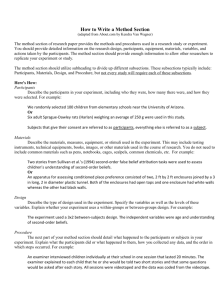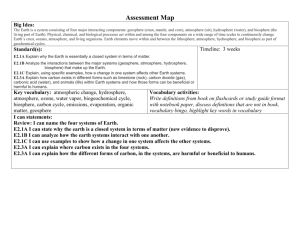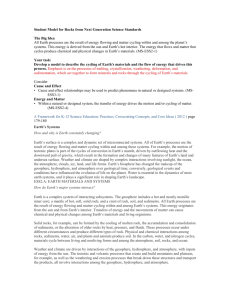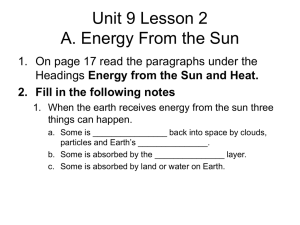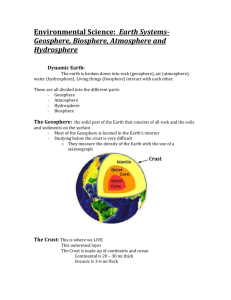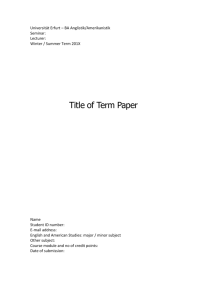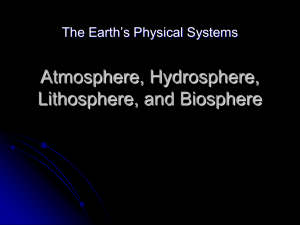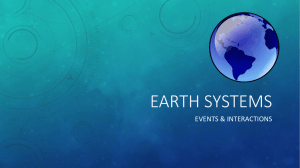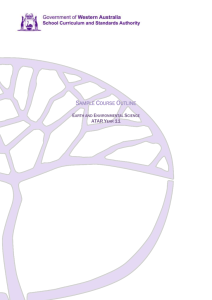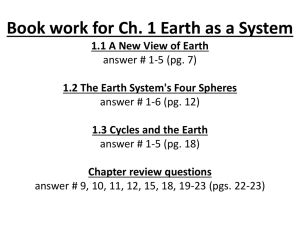File
advertisement
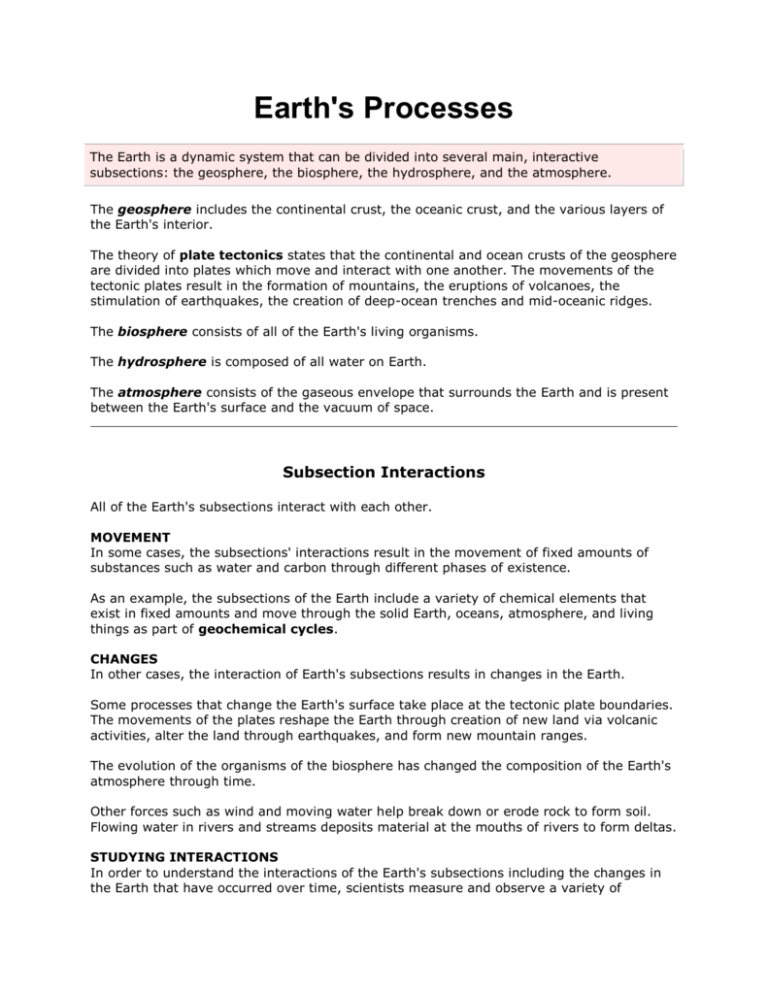
Earth's Processes The Earth is a dynamic system that can be divided into several main, interactive subsections: the geosphere, the biosphere, the hydrosphere, and the atmosphere. The geosphere includes the continental crust, the oceanic crust, and the various layers of the Earth's interior. The theory of plate tectonics states that the continental and ocean crusts of the geosphere are divided into plates which move and interact with one another. The movements of the tectonic plates result in the formation of mountains, the eruptions of volcanoes, the stimulation of earthquakes, the creation of deep-ocean trenches and mid-oceanic ridges. The biosphere consists of all of the Earth's living organisms. The hydrosphere is composed of all water on Earth. The atmosphere consists of the gaseous envelope that surrounds the Earth and is present between the Earth's surface and the vacuum of space. Subsection Interactions All of the Earth's subsections interact with each other. MOVEMENT In some cases, the subsections' interactions result in the movement of fixed amounts of substances such as water and carbon through different phases of existence. As an example, the subsections of the Earth include a variety of chemical elements that exist in fixed amounts and move through the solid Earth, oceans, atmosphere, and living things as part of geochemical cycles. CHANGES In other cases, the interaction of Earth's subsections results in changes in the Earth. Some processes that change the Earth's surface take place at the tectonic plate boundaries. The movements of the plates reshape the Earth through creation of new land via volcanic activities, alter the land through earthquakes, and form new mountain ranges. The evolution of the organisms of the biosphere has changed the composition of the Earth's atmosphere through time. Other forces such as wind and moving water help break down or erode rock to form soil. Flowing water in rivers and streams deposits material at the mouths of rivers to form deltas. STUDYING INTERACTIONS In order to understand the interactions of the Earth's subsections including the changes in the Earth that have occurred over time, scientists measure and observe a variety of situations, items, and phenomena using such tools and methods as ice coring, radiometric data, topography, fossils, and rock stratification. These things are defined below. Fossils - the mineralized remains of animals or plants. Ice core - a multiple-year sample taken from the accumulation of snow and ice that has recrystallized and trapped air bubbles from previous time periods. The composition of the ice cores can provide a picture of the climate over time. Radiometric quantifies the concentration of potassium, uranium and thorium in rocks and data soils from the Earth’s surface to depths of tens or hundreds of meters. This information can be obtained from the ground or from the air. refers to the layering that occurs in most sedimentary rocks and igneous Rock rocks that are formed at the Earth's surface. stratification Topography - the study of the shapes, patterns and physical configuration of the surface of the land, including differences in the elevations and the positions of natural and man-made features.

